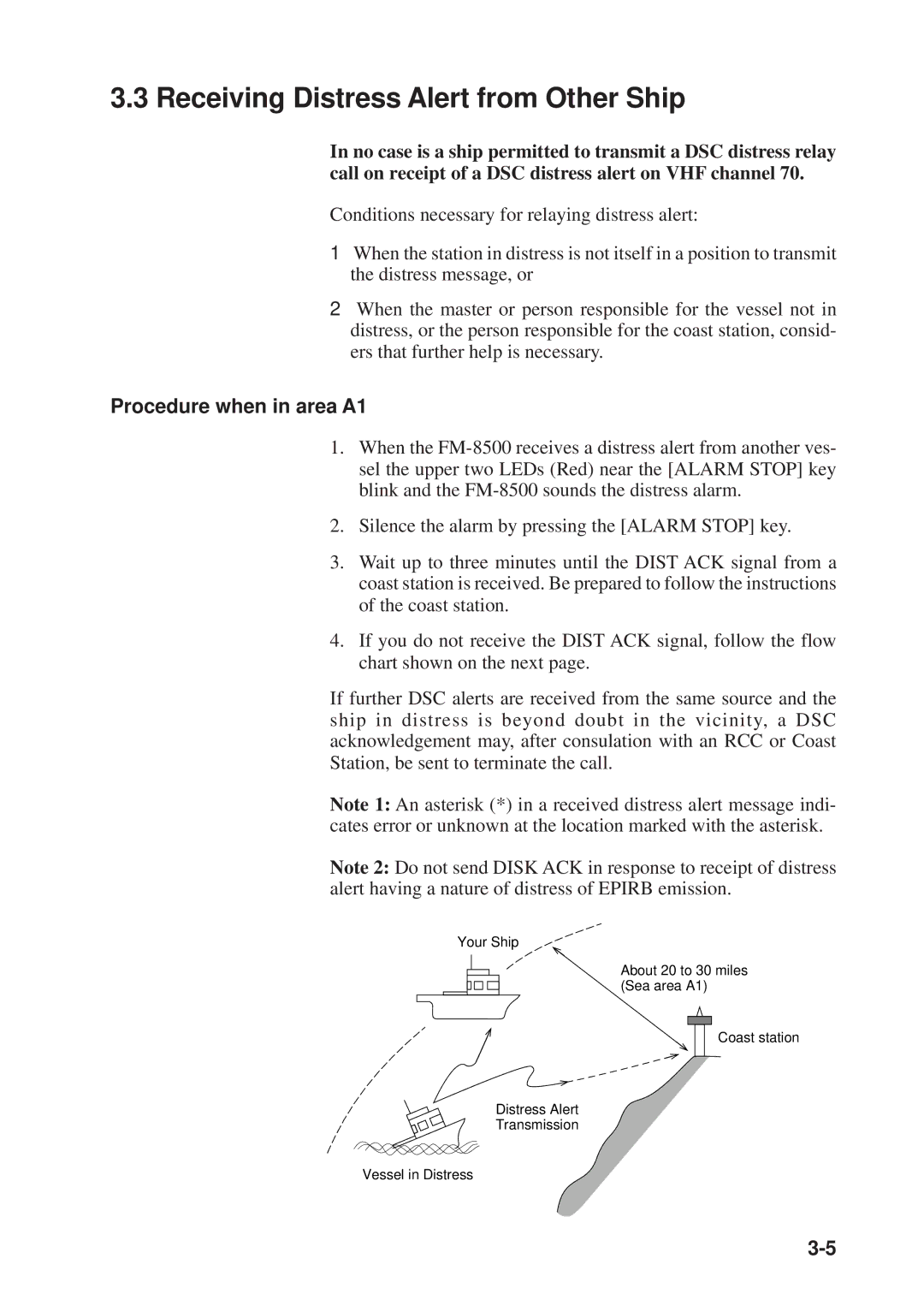
3.3 Receiving Distress Alert from Other Ship
In no case is a ship permitted to transmit a DSC distress relay call on receipt of a DSC distress alert on VHF channel 70.
Conditions necessary for relaying distress alert:
1When the station in distress is not itself in a position to transmit the distress message, or
2When the master or person responsible for the vessel not in distress, or the person responsible for the coast station, consid- ers that further help is necessary.
Procedure when in area A1
1.When the
2.Silence the alarm by pressing the [ALARM STOP] key.
3.Wait up to three minutes until the DIST ACK signal from a coast station is received. Be prepared to follow the instructions of the coast station.
4.If you do not receive the DIST ACK signal, follow the flow chart shown on the next page.
If further DSC alerts are received from the same source and the ship in distress is beyond doubt in the vicinity, a DSC acknowledgement may, after consulation with an RCC or Coast Station, be sent to terminate the call.
Note 1: An asterisk (*) in a received distress alert message indi- cates error or unknown at the location marked with the asterisk.
Note 2: Do not send DISK ACK in response to receipt of distress alert having a nature of distress of EPIRB emission.
Your Ship
About 20 to 30 miles (Sea area A1)
Coast station
Distress Alert
Transmission
Vessel in Distress
